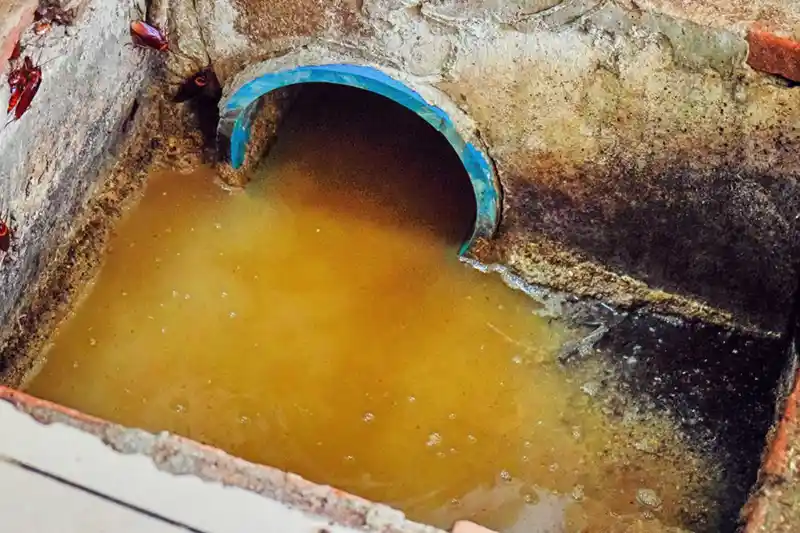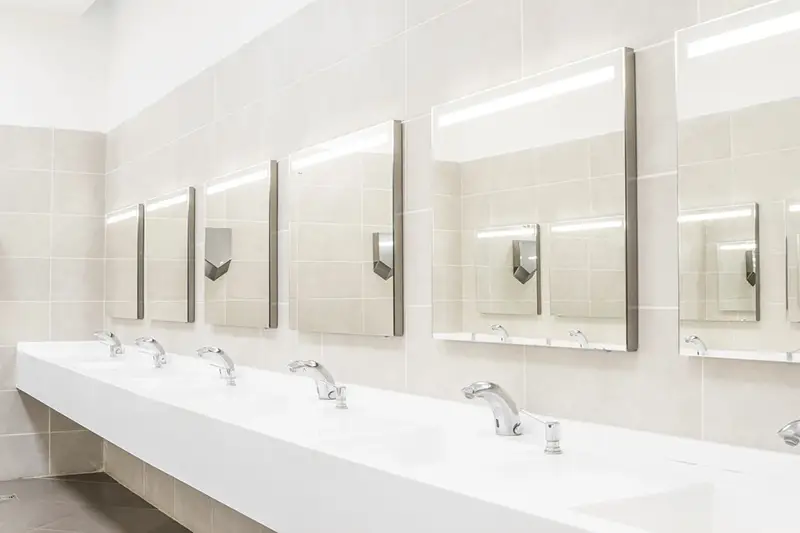Grease traps are an essential component of any restaurant’s plumbing system, preventing fats, oils, and grease (FOG) from clogging drains and causing costly plumbing issues. Without a properly maintained grease trap, restaurants risk plumbing backups, health code violations, and environmental harm. This guide will help restaurant owners and managers with their understanding of grease traps, how they work, and best practices for maintenance.
What Is a Grease Trap?
A grease trap, also known as a grease interceptor, is a plumbing device designed to capture FOG before it enters the main sewer system. These traps slow down wastewater flow, allowing grease to cool and separate from water. Since grease is lighter than water, it rises to the top while solids settle at the bottom, and cleaner water flows into the sewer system.
Why Are Grease Traps Important?
Grease traps play a crucial role in keeping commercial kitchens running smoothly. Here’s why they are essential:
- Prevents Clogs and Sewer Backups: Without a grease trap, FOG can accumulate in pipes, leading to severe blockages and expensive repairs.
- Ensures Compliance with Regulations: Many local health departments and environmental agencies require restaurants to have functioning grease traps to prevent pollution.
- Protects the Environment: FOG entering the sewer system can contribute to sewage overflows and water contamination, harming local ecosystems.
- Improves Kitchen Efficiency: A properly maintained grease trap reduces unpleasant odors, enhances hygiene, and helps keep kitchen plumbing systems in good condition.
How Do Grease Traps Work?
Grease traps operate by using a simple separation process:
- Wastewater from sinks, dishwashers, and drains flows into the grease trap.
- The trap slows the water flow, allowing grease and oils to rise to the surface.
- Solids and food particles settle at the bottom of the trap.
- The remaining wastewater, free from excessive grease, exits the trap and enters the sewer system.
- The accumulated grease and solids need to be regularly removed to maintain efficiency.
Types of Grease Traps
There are two main types of grease traps used in restaurants:
- Passive Grease Traps: Small units typically installed under sinks or near dishwashers. These need frequent manual cleaning.
- Gravity Grease Interceptors: Larger tanks installed underground or outside, designed for high-volume grease separation. These require professional pumping and maintenance.
Grease Trap Maintenance Best Practices
Proper grease trap maintenance is essential to ensure efficiency and prevent costly issues. Here are some best practices:
1. Regular Cleaning and Pumping
Depending on the size and usage of your grease trap, cleaning should occur weekly, biweekly, or monthly. Larger interceptors require professional pumping every few months.
2. Scrape Dishes Before Washing
Reducing the amount of grease entering the trap helps prevent excessive buildup. Train staff to scrape food waste into trash bins before washing dishes.
3. Use Enzyme Treatments Cautiously
While enzyme-based cleaners claim to break down grease, they can also push FOG deeper into pipes, causing issues. Always follow manufacturer guidelines or consult a professional.
4. Monitor Grease Trap Levels
Regularly inspect your grease trap to ensure it’s not overflowing. If the grease layer exceeds 25% of the trap’s capacity, it’s time for a cleaning.
5. Avoid Pouring Hot Grease Down Drains
Hot grease can flow past the trap and solidify in pipes further down the line. Always dispose of grease properly in designated containers.
6. Train Kitchen Staff
Educate employees on grease trap maintenance and best practices to minimize FOG buildup and ensure compliance with regulations.
Common Grease Trap Issues and How to Fix Them
Even with a good understanding of grease traps, they can develop problems. Here are some common issues and their solutions:
- Foul Odors: Caused by excessive grease buildup or infrequent cleaning. Solution: Increase cleaning frequency and use odor-neutralizing treatments.
- Slow Drainage: Indicates a clogged grease trap. Solution: Schedule professional cleaning and inspect for blockages.
- Overflowing Grease Trap: Happens when the trap is not emptied regularly. Solution: Establish a strict cleaning schedule.
- Solidified Grease in Pipes: Can cause major blockages. Solution: Avoid pouring grease down drains and use a professional service to clear clogs.
Conclusion
Grease traps are a vital part of any restaurant’s plumbing system, protecting against costly repairs, regulatory fines, and environmental damage. By understanding grease traps and following best maintenance practices, restaurant owners can keep their kitchens running efficiently and avoid plumbing disasters. Regular cleaning, staff training, and professional servicing are key to ensuring a functional and compliant grease trap system. Investing in proper grease trap care will save time, money, and headaches in the long run.





